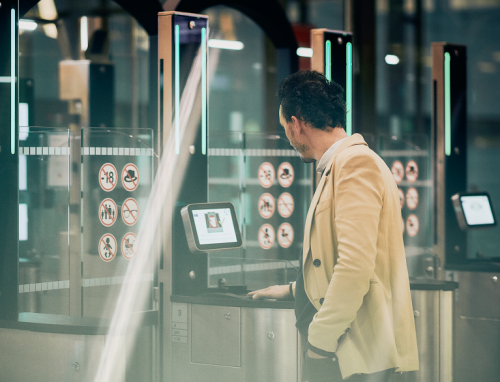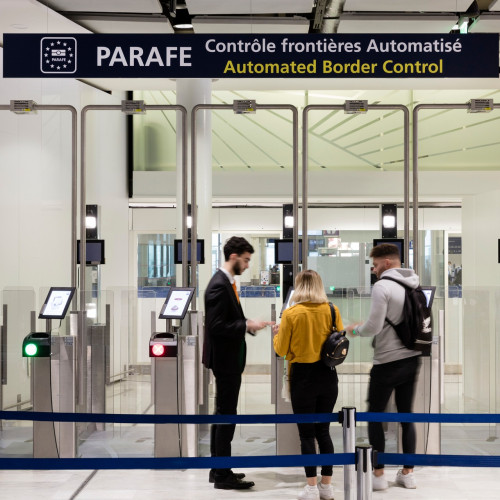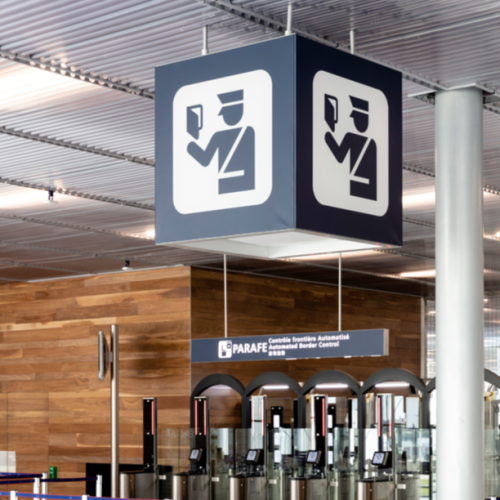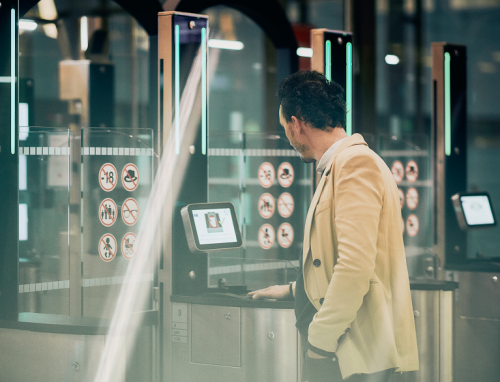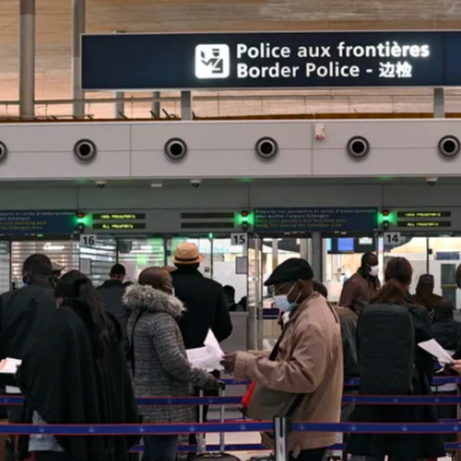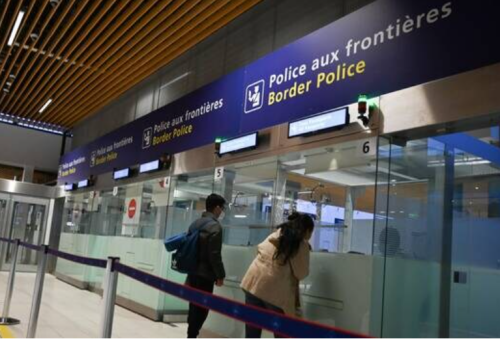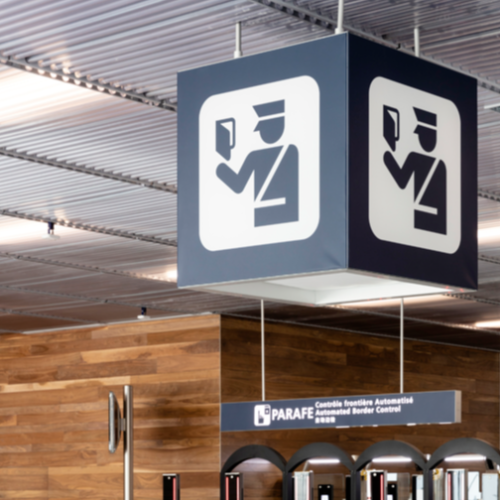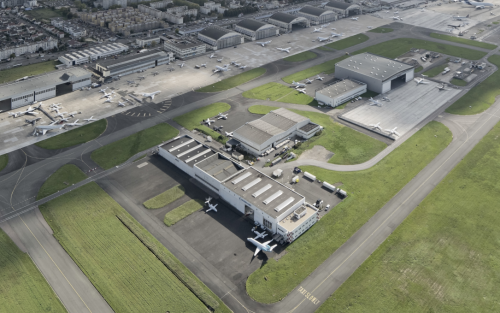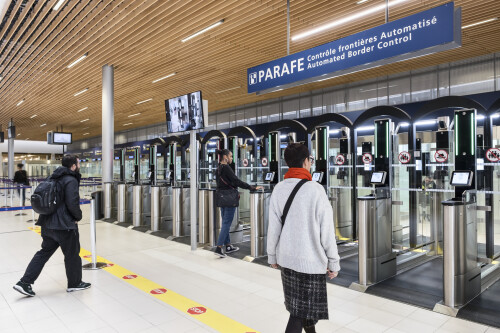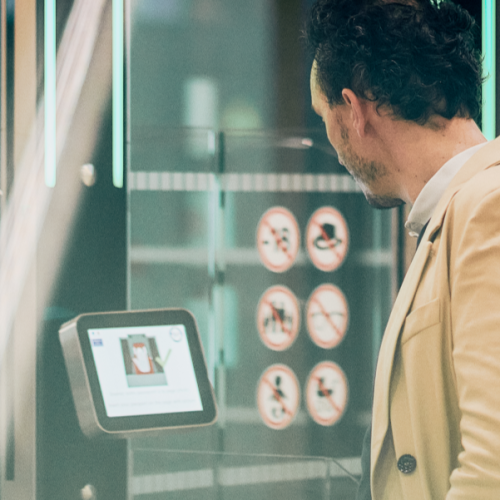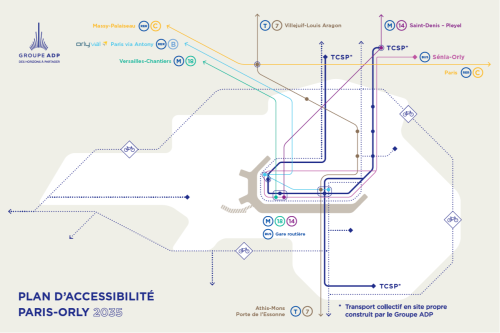The "Direction de la Police aux Frontières" (head of French Border Police) and Groupe ADP have joined forces to draw up a monthly report on the waiting times encountered by passengers at the various border control points at Paris-Charles de Gaulle and Paris-Orly Airports.
General trend observed in March 2023:
For the record, the maximum waiting times at the Border Police in airports, targeted by the French Prime Minister - during the inter-ministerial council on tourism on 26th July 2017, are 30 minutes for European nationals and 45 minutes for non-Europeans.
- At Paris-Charles de Gaulle: out of nearly 3.3 million passengers on international flights [1], 81% waited less than 10 minutes, 96% less than 30 minutes and 99% less than 45 minutes.
- At Paris-Orly: out of nearly 1,2 million passengers on international flights, 86% waited less than 10 minutes, 99% less than 30 minutes and 99% less than 45 minutes.
Events resulting in waiting times of over 30 minutes [2]:
At Paris-Charles de Gaulle /
Week 9: 25 events affecting around 7,950 passengers, with an average waiting time of 45 minutes.
Week 10: 40 events affecting around 14,900 passengers, with an average waiting time of 45 minutes.
Week 11: 34 events affecting around 11,650 passengers, with an average waiting time of 45 minutes.
Week 12: 56 events affecting around 20,730 passengers, with an average waiting time of 50 minutes.
Week 13: 44 events affecting around 11,300 passengers, with an average waiting time of 45 minutes.
At Paris-Orly /
Week 9: 6 events affecting around 890 passengers, with an average waiting time of 55 minutes.
Week 10: 4 events affecting around 450 passengers, with an average waiting time of 35 minutes.
Week 11: 12 events affecting around 2,150 passengers, with an average waiting time of 40 minutes.
Week 12: 12 events affecting around 1,930 passengers, with an average waiting time of 40 minutes.
Week 13: 1 event affecting around 100 passengers, with an average waiting time of 35 minutes.
Flashbacks at some events:
On Saturday, March 4, at Orly departures from 11:55 am to 1:05 pm, the Ministry of the Interior's computer system failed: more than 300 passengers were faced with a maximum waiting time of 85 minutes. This deteriorated the overall punctuality of some 20 departing flights, which were delayed by up to 1 hour and 40 minutes.
On Thursday March 23, departures and arrivals at Terminal CDG2E were affected by an undeclared demonstration that mobilized the police: demonstrators blocked access to Terminal 1 during the morning, mobilizing many border police officers to manage this undeclared demonstration. This reduced the number of police officers available at the borders of Terminal 2E, during a period of heavy traffic: around 1,350 passengers waited around 70 minutes for arrivals, around 1,600 passengers waited more than 55 minutes for departures.
On Friday March 24, the Ministry of the Interior's IT system broke down, affecting all the terminals at Paris-Charles de Gaulle: this IT failure rendered the PARAFE airlocks unusable from the start of operations until the problem was resolved at 9:45 am. Although the police staff assigned to supervise the airlocks were able to be redeployed to the departure lounges, the breakdown had a major impact: at Terminal 2E, some 2,100 non-European passengers waited 1 hour and 20 minutes for arrivals, and nearly 1,700 non-European passengers waited 1 hour for departures.
***
Groupe ADP launches a program to reinforce PARAFE airlocks
Groupe ADP, in collaboration with the Border Police, will increase the number of PARAFE (Automated Rapid Border Crossing) airlocks in Paris airports. There are currently 122 airlocks (100 at Paris-Charles de Gaulle, 22 at Paris-Orly).
Groupe ADP is in the process of redeploying existing airlocks (which is possible due to the closure of the 2AC terminals for renovation), and installing new airlocks on the borders that are most heavily used.
At Paris-Charles de Gaulle, work began on March 8 to add five additional airlocks to Terminal 1 departures, increasing their number from three to eight by early May. Similar work began on March 22 at arrivals in Terminal 2E, to add 5 airlocks to the 10 currently in operation by mid-May.
By summer 2023, 17 airlocks will have been deployed. Groupe ADP will continue this reinforcement plan, with the aim of offering 170 airlocks for the summer of 2024 (+39%).
***
Details of monthly results for March 2023 regarding Paris-Charles de Gaulle and Paris-Orly:

Methodology: real time data from counting sensors
Since 2019, Groupe ADP has deployed tools to monitor and control passenger flows and waiting times. In particular, sensors allowing the number of passengers to be counted in real time in a queue have been deployed to equip the border crossing and safety control areas of Paris Airports. This is a real-time measurement tool that is automatically updated every five seconds.
It counts the number of passengers in a queue by measuring how long the last person to leave the queue has been waiting. Between 80 and 200 sensors are needed to cover an area, depending on its size.The data is fed into an operational performance monitoring tool that analyses what has happened in an operational day. It is the data extracted from these sensors that is used to set up this barometer.
Special case of CDG Terminal 1: this terminal has recently been reopened and is not yet fully equipped with waiting time monitoring tools. The deployment will be finalised by the summer and the results for Terminal 1 will thus be integrated into the barometer.
[1] Passengers who crossed the border on departure, in transit or on arrival at Paris-Charles de Gaulle or Paris-Orly are taken into account (therefore, not passengers on domestic or Schengen flights).
[2] Events impacting more than 50 passengers, per calendar week, are included. Two occurrences must be separated by 20 minutes, otherwise only one event is counted.










